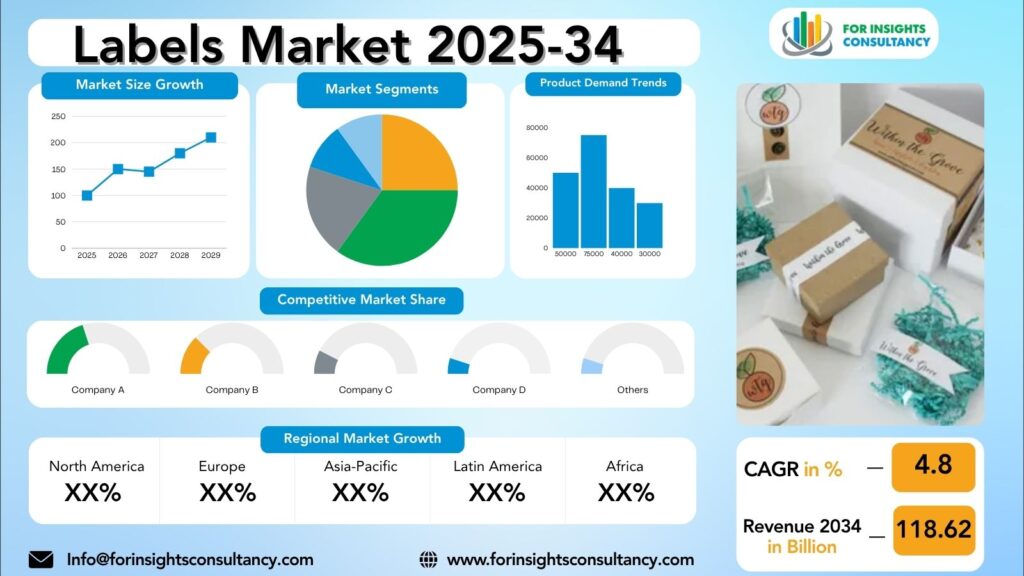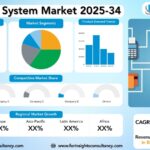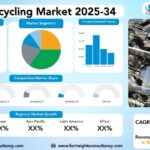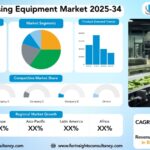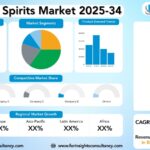
Labels Market Size, Trends Analysis Research Report By Label Type (Pressure-Sensitive Labels (Self-Adhesive) (The largest segment), Shrink and Stretch Sleeves, In-Mold Labels (IML), Wet Glue Labels (Cut and Stack), Thermal Transfer Labels), by Material (Paper and Paperboard (Largest by volume/revenue in some reports), Plastics (e.g., Polyethylene (PE), Polypropylene (PP), PVC, PET), Foil), By Printing Technology, by End-User, And by Vehicle Type, and By Region Global Market Analysis And Forecast, 2025-2034
Sep-2025 Formats | PDF | Category: Packaging | Delivery: 24 to 72 Hours
The report highlights that the market outlook is significantly influenced by swift shifts in global trade relations and tariffs. It emphasizes the necessity of updating the report before delivery to incorporate the most current status, which includes revised market forecasts and a comprehensive analysis of the quantified impacts of these changes.
Labels Market Is Forecast to Increase from USD 76.8 Billion In 2025 To USD 47.56 Billion By 2034, At A CAGR Of 4.8%.
Labels Market: A Comprehensive Overview and Future Developments
The Labels market is witnessing substantial growth globally, propelled by the heightened demand across various sectors such as food and beverage, healthcare, and consumer goods. This detailed analysis explores the prevailing trends, challenges, and opportunities that are defining the market landscape. Notable advancements in technology, coupled with an increasing emphasis on sustainability, foresee a bright future for the Labels market, characterized by innovations including smart labels, RFID tags, and eco-friendly materials gaining popularity.
Major industry players are channeling investments into research and development to enhance their product offerings and extend their global presence. As the sector undergoes transformation, collaborative efforts, mergers, and acquisitions are projected to redefine the competitive landscape, resulting in new growth pathways and market expansion possibilities. The Labels market is poised for exciting developments in the forthcoming years as it continues its upward trajectory.
AI Impact
In the Labels Market, the integration of Artificial Intelligence (AI) is profoundly transforming label creation, management, and utilization. Leveraging advanced technologies such as machine learning and computer vision, companies are able to automate processes associated with label generation, significantly enhancing both accuracy and efficiency. AI-driven solutions facilitate a more streamlined approach to labeling strategies, which contributes to improved product performance. Additionally, these innovations enhance data quality and optimize workflows within labeling operations, ultimately fostering higher operational efficiency. Consequently, the Labels Market is undergoing a significant digital transformation, with AI at the forefront, propelling innovation and growth across the industry.
Market Dynamics
Trends
The Labels Market is undergoing continuous evolution influenced by significant trends. A key trend is the rising demand for sustainable and eco-friendly labels, driven by consumers’ growing awareness of environmental impacts, which is prompting a transition towards biodegradable and recyclable materials. Concurrently, digital printing technology is on the rise, facilitating increased customization and shorter print runs, thus aligning with the market’s preference for personalized products. Additionally, the emergence of smart labels utilizing RFID technology is becoming more prominent, providing real-time tracking and data, thereby enhancing supply chain management and consumer interaction. Collectively, these innovations reflect the industry’s response to the dynamic needs of consumers and businesses, showcasing a commitment to sustainability and technological advancement.
Growth Drivers
The labels market is undergoing substantial growth, influenced by several key factors that are redefining the industry. A primary driver of this expansion is the escalating demand for product identification and branding, particularly in the retail and packaging sectors. Additionally, advancements in label printing technologies and materials have significantly contributed to this market growth. There is also a growing focus on sustainability and eco-friendly labeling solutions, which is spurring innovation and creating new opportunities within the labels market. Collectively, these drivers are not only propelling the market’s growth but are also shaping its future direction, prioritizing increased efficiency, customization, and environmental responsibility.
Restraints
In the Labels Market, several significant restraints must be acknowledged. Key among these is the increasing competition, which exerts pressure on pricing and results in lower profit margins for manufacturers of labels. Additionally, companies are confronted with strict regulations and compliance requirements across various industries, complicating their capacity to meet all necessary standards. Rapid technological advancements necessitate continuous innovation to maintain a competitive edge, presenting further challenges to businesses. Moreover, fluctuating prices of raw materials significantly impact production costs and overall profitability. Lastly, limited consumer awareness regarding the importance of labels impedes market growth and adoption. Together, these constraints underscore the complexities and difficulties faced by enterprises in the Labels Market, emphasizing the importance of strategic planning and adaptability to remain competitive.
Opportunities
The labels market is characterized by rapid dynamics and significant potential for development and innovation. As various industries prioritize branding and product identification, the demand for high-quality labels is increasing. Companies in this sector can leverage this trend by providing customized, eco-friendly, and technologically advanced labeling options. Furthermore, the rising emphasis on sustainability and product traceability has created a need for labels that communicate relevant information regarding a product’s origins, ingredients, and environmental implications. This development offers an excellent opportunity for participants in the labels market to innovate and respond to changing consumer preferences. To thrive in this competitive arena, businesses must remain proactive concerning market trends, invest in research and development, and establish strategic partnerships, thereby positioning themselves for success and unlocking new growth avenues.
Challenges
In the Labels Market, multiple challenges are currently influencing dynamics, including heightened competition, variability in raw material costs, and shifting consumer preferences. To maintain a competitive edge and adapt to evolving customer demands, companies must invest in innovative technologies. Furthermore, the increasing focus on sustainability and adherence to regulatory requirements for eco-friendly labeling adds another layer of complexity to the market environment. Successfully navigating these challenges necessitates strategic planning, supply chain optimization, and ongoing product innovation. By tackling these issues proactively, companies can differentiate themselves, foster growth, and solidify their position within the industry.
Labels Market Top Companies Covered In This Report:
Evaluate The Strategic Positioning And Innovation Pipelines Of Leading Market Companies-From Multinational Enterprises To Disruptive Regional Firms. Understand How Key Players Are Innovating, Expanding, And Capturing Value, And Use Competitive Benchmarks To Plan Your Next Move.
- AVERY DENNISON CORPORATION
- CCL Industries
- UPM Global
- Fuji Seal International, Inc.
- 3M Company
- Multi-Color Corporation
- Toray Plastics (America), Inc.
- Huhtamäki Oyj
- Derksen Co.
- Sigma Aldrich Corporation
- JK Labels
- Amcor plc
- Klöckner Pentaplast
- Allen Plastic Industries Co., Ltd.
- Lintec Corporation
- BRADY Corp
Labels Market Company News 2024 and 2025
Avery Dennison
Recyclable RFID Breakthrough (2025): Unveiled an industry-first RFID label recognized by the Association of Plastic Recyclers (APR) for compatibility with the PET recycling stream, using its proprietary CleanFlake™ adhesive technology.
CCL Industries
Reported record adjusted earnings per share for the first and second quarters of 2025, despite external operating conditions.
Completed or announced several bolt-on acquisitions (e.g., Faubel & Co. in 2023 impacting 2024/2025 reporting, a bolt-on acquisition in 2025) to strengthen its position, particularly in specialized segments like pharmaceutical labels.
UPM (formerly UPM Raflatac)
The UPM Raflatac business area was renamed UPM Adhesive Materials to reflect its strategic direction to grow beyond label materials into graphics solutions and specialty tapes.
Segmented View of The Industry:
The Labels Market Is Mapped Through A Multidimensional Lens-Tracking Shifts Across Product Type, Applications, And Geographic Regions. This Segmented Approach Enables Businesses to Localize Their Growth Plans And Align Offerings With The Most Profitable Demand Centres.
Segmentation By Label Type
- Pressure-Sensitive Labels (Self-Adhesive) (The largest segment)
- Shrink and Stretch Sleeves
- In-Mold Labels (IML)
- Wet Glue Labels (Cut and Stack)
- Thermal Transfer Labels
Segmentation By Printing Technology
- Flexography (The most dominant analog method)
- Digital Printing (Inkjet and Electrophotography – The fastest-growing)
- Gravure, Offset, Screen, etc
Segmentation By End-Use Industry
- Food and Beverages (The largest application segment)
- Pharmaceutical and Healthcare
- Personal Care and Cosmetics
- Retail and Logistics/E-commerce
- Industrial and Automotive
Global Geographic Coverage:
The Report Provides In-Depth Qualitative And Quantitative Data On The Labels Market For All Of The Regions And Countries Listed Below:
North America
In the North America labels market, significant dynamics are shaping its development, with eco-friendly and sustainable packaging driving demand. The United States is leading this growth, particularly through the increasing adoption of smart labels and RFID technology across various sectors. This advancement is not only spurring the market’s expansion but also enhancing efficiency and traceability in supply chains. In Canada, the food and beverage industry is a key segment, contributing to a noteworthy rise in label demand, aligning with global trends toward healthier and more sustainable consumer choices. Meanwhile, Mexico is experiencing a notable transition towards digital labels and packaging, a response to changing consumer preferences and the push for more personalized products.
The overarching theme within North America’s labels market is a strong emphasis on innovation and technological integration. Companies are actively investing in labeling solutions that enhance product visibility and strengthen brand positioning. The market is likely to continue its upward trajectory as businesses strategically develop labeling strategies that cater to the diverse requirements of different industries. This multi-faceted approach not only fulfills regulatory requirements but also fosters consumer engagement and loyalty, setting the stage for sustained growth in the North American labels sector.
Europe
The Labels Market in Europe is marked by robust growth, with each country playing a distinct role in its evolution. Germany leads as a major player, exhibiting a significant demand for innovative labeling solutions across diverse industries. The UK’s market is heavily influenced by its strict labeling regulations, which promote a shift towards sustainable and eco-friendly options. In France, the focus is on premium and luxury labels, particularly in the fashion and beauty sectors. Italy emphasizes design and aesthetics in its labels market, a reflection of its rich artistic heritage. Spain’s burgeoning food and beverage industry increases the need for labels that communicate authenticity and quality. The Netherlands showcases notable innovation through advancements in smart labeling technologies, enhancing consumer engagement with digital integrations. In summary, the Labels Market in Europe is vibrant and multifaceted, presenting numerous avenues for innovation and development.
Asia Pacific
The Labels Market in Asia Pacific is experiencing substantial growth, influenced by several key factors including rising urbanization, a heightened demand for packaged goods, and advancements in labeling technologies. China is identified as the largest market in the region, exhibiting a significant surge in demand for labels across diverse industries such as food & beverage, pharmaceuticals, and logistics. This demand is bolstered by the country’s strong manufacturing sector, which plays a critical role in driving market expansion. Conversely, India is emerging as a pivotal player in this market, primarily propelled by rapid industrialization and a flourishing e-commerce sector that increases the need for effective labeling solutions. Japan’s demand for labels is largely driven by its established retail sector and stringent labeling regulations that necessitate high-quality labeling practices. Additionally, South Korea is notable for its technological innovations in label printing and the implementation of avant-garde labeling solutions, which further enhance its market position. Overall, the labels market in the Asia Pacific region is forecasted to see consistent growth in the forthcoming years, with China, India, Japan, and South Korea leading the charge due to their unique requirements and technological progressions.
Middle East and Africa
The labels market in the Middle East and Africa is experiencing substantial growth, primarily fueled by rising demands for product labeling and branding across diverse industries. In the Middle East, nations such as Saudi Arabia, the UAE, and Qatar are leading this market expansion, largely due to their flourishing retail and food sectors coupled with stringent labeling regulations that enhance market dynamics. Meanwhile, in Africa, countries like Nigeria, Kenya, and South Africa are witnessing an uptick in label demand particularly within the pharmaceutical and fast-moving consumer goods (FMCG) sectors. The burgeoning urban populations and increasing disposable income levels in these nations are catalysts for market growth. Each country within the region presents distinct opportunities and challenges, necessitating a deep understanding of local requirements and consumer preferences for companies aiming to leverage the escalating demand for labels effectively. This localized approach is critical for maximizing potential in the evolving labels market across the Middle East and Africa.
Reasons To Buy:
- The Research Would Help Top Administration/Policymakers/Professionals/Product Advancements/Sales Managers And Stakeholders In This Market In The Following Ways.
- The Report Provides Labels Market Revenues At The Worldwide, Regional, And Country Levels With A Complete Analysis To 2034 Permitting Companies To Analyze Their Market Share And Analyze Projections, And Find New Markets To Aim For.
- To Understand The Most Affecting Driving And Restraining Forces In The Market And Their Impact On The Global Market.
- Major Changes And Assessment In Market Dynamics And Developments.
- The Objective Of The Labels Market Report Is To Identify New Business Opportunities Using Quantitative Market Forecasts.
- Formulate Sales And Marketing Strategies By Gaining An Understanding Of Competitors, Their Positioning, And Strengths & Weaknesses.
Faq – What Global Leaders Are Asking
What Is The Growth Prospect For The Labels Market By 2034?
Labels Market Is Expected To Achieve A Stable Growth Rate With A Compound Annual Growth Rate (CAGR) Of About 4.8% From 2025 Through 2034.
What Is Driving The Growth Of The Labels Market?
The labels market is primarily driven by the growth of e-commerce, consumer goods, and strict regulatory needs for product information (especially in Food & Pharma). This growth is further fueled by advancements in smart labeling (RFID/NFC) and the increasing demand for sustainable, eco-friendly packaging materials.
This escalating threat landscape is compounded by accelerated digital transformation (cloud migration, remote work) and stringent global regulatory compliance.
Who Are The Key Players In The Labels Market, And What Are Their Market Shares?
The Labels Market Includes Major Companies AVERY DENNISON CORPORATION, CCL Industries, UPM Global, Fuji Seal International, Inc., 3M Company, Multi-Color Corporation, Toray Plastics (America), Inc., Huhtamäki Oyj, Derksen Co., Sigma Aldrich Corporation, JK Labels, Amcor plc, Klöckner Pentaplast, Allen Plastic Industries Co., Ltd., Lintec Corporation, BRADY Corp, Others.
Specific Market Share Data Is Not Publicly Available And Is Typically Provided In Detailed, Proprietary Market Research Reports.
Which Regions Are Leading The Labels Market Growth?
The Asia Pacific region holds the largest market share globally due to rapid industrialization, high consumer goods demand, and a massive population base (especially in China and India). However, Asia Pacific is also frequently cited as the fastest-growing region, driven by the booming e-commerce and logistics sectors.
Customization: We Can Provide Following Things
1) On Market More Company Profiles (Competitors)
2) Data About Particular Country Or Region
3) We Will Incorporate The Same With No Additional Cost (Post Conducting Feasibility).
Any Requirement Contact Us: Https://Www.Forinsightsconsultancy.Com/Contact-Us/
Table of Contents
For TOC Contact us: https://forinsightsconsultancy.com/contact-us/

